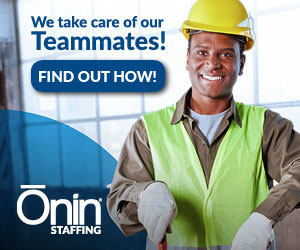Typically, one assumes that nearly any business desires to grow and become big. Growth is often the focus of most businesses, whether deliberate and documented or informal and unspoken. And growth is good, sometimes.
If we look around us, it is not hard to see that size does not seem to be a particular advantage in this economy. Some have observed, for instance, that it is the larger banks who currently have the most difficulties.
What is an advantage is the ability and willingness to adapt, to actually capitalize on the changes around us. To do this, organizations must be nimble.
We define organizational nimbleness as the ability and willingness to make smart and timely decisions about core organizational strategies, resources and actions based on real-world dynamics.
Consider what scientist John Medina says about human history and our ability to adapt:
“How, then, did [humans] go from such a wobbly, fragile, minority population to a staggering tide of humanity 7 billion strong and growing? There is only one way. You give up on stability. You don’t try to beat back the changes. You begin not to care about consistency within a given habitat, because such consistency isn’t an option. You adapt to variation itself.”
Rather than fight change, as humans, we survived as a race because we embraced change. There is a lesson here for business leaders as well. If we build our businesses around the strategy of enduring the change around us — of surviving until the change reverts to the status quo — eventually we will fail. This failure is caused by two realities:
- We, at best, will endure the change, but will not benefit from the change.
- The status quo, as we once knew it, will never return and, in fact, the status quo is constantly changing.
But if we instead build our businesses around the strategy of adapting to the change—of expecting change and then benefiting from it—we can prevail.
Remember that there are larger and faster animals than humans, but we ended up at the top of the food chain. The same can be true of your business.
Major Phases in the Evolution of Modern Business
Society, and specifically business, is not static. It has been in constant change and always will be. When viewed over a short period, it may not seem this way. But when viewed over any extended period of time it is obvious. The lesson here is that we make a mistake if we think the way of doing business that has worked for the last 10, 20 or even 30 years will be the way of doing business for any foreseeable period of time in the future.
To exemplify this, let’s look at some of the phases that society has gone through, with a particular eye for its impact on the world of business.
- Hunter-gatherers: This is the phase of our existence wherein we survived by wandering around and gathering plants and hunting animals we encountered.
- Pastoralists: This is the phase where we figured out that we didn’t need to rely on chance encounters with animals, but instead we could capture the animals, domesticate them, and take them with us as we wandered around finding the best grazing ground for our animals. We ate the animals and their byproducts such as milk.
- Horticulturalists: Similarly, horticulturalists figured out we can actually plant crops, tend them and harvest them, all with a bit more control and predictability than just wandering around hoping to encounter edible plants. We did all the work by hand with the aid of tools.
- Agrarians: Here we had a breakthrough — we realized we could get help in doing our farming, and we employed with the help of animals. It became a blend of the pastoralist and horticulturalist.
- Industrial Revolutionists: We had another breakthrough — we didn’t all have to do the same thing. In fact, it wasn’t not be a good idea for all of us to do the same thing. Focusing on a specialty could be more efficient. This is called the division of labor. The ramifications were huge and wide-reaching.
- Information Age/Post-Industrial Ageists: The focus here is not on products, but on services and information.
We are, at this time, teetering between the Industrial age, the Information/Post-industrial age and the next age.
What is that next age? The Nimble Age.
Why Nimble is More Important Now
The degree to which nimbleness becomes desirable is determined by the degree to which you can predict the future. If you have confidence in your ability to predict the future, your organization does not need to be nimble.
But let’s compare our ability to forecast now versus a few years ago:
- A few years ago most of your competitors, suppliers and customers would be around year after year.
- In looking to the future, even seemingly stable competitors, suppliers and customers are going out of business.
- A few years ago, many companies knew sales would increase by 3%, 5%, maybe 10% each year.
- Today, it is hard to know if sales will increase by 25% or decrease by 25%.
- The percentage change in gasoline prices over the last year or so is unprecedented.
In other words, we live in very volatile times which require us to be nimble for survival. Will this volatility continue? There will be periods of relative stability, relative predictability; but, an assumption that things will stabilize could be very risky. An assumption of volatility, combined with a strategy of nimbleness, is a safer bet in the long haul.
Redirecting our Motivations
For most of recent history, the focus of almost all businesses has been growth. The desire to grow is motivated by many things. Some seek growth to achieve a greater level of strength, to have control over their destiny, or to achieve safety and security. Others seek growth out of a desire to find challenge and adventure. These motivations can also be directed at being nimble.
- Recognize that growth can take many forms and growth need not only be in top-line sales revenues or headcounts. It can be growth in flexibility, nimbleness, quality, efficiency, sustainability, innovation and perhaps as a result, a growth in profits.
- Accept that a large company does not necessarily equate to strength and stability. Our own history as humans has shown that to be the case. Recent history in the business world has shown this to be a dubious assumption.
- Respond when there is great challenge and adventure in evolving a company. This flexibility to grow, contract or shift is to be more responsive and adaptable to our changing economic environment. Perhaps there is even more adventure in this calling than merely increasing the size of a company.
Advantages of a Nimble Organization
There are many advantages of a nimble strategy:
Creating a Nimble Organization
In many ways, building a nimble organization is counterintuitive. Much of what we have seen and have been taught is focused on how to become big, how to achieve momentum and how to develop economies of scale. Being nimble requires a significantly different mindset. Decisions that once made sense because they promoted a larger organization may not make sense if you are instead focusing on developing a nimble organization.
What is needed for an organization to shift its focus from mass to adaptability? Here are the key elements to creating a nimble organization:
- Wise: Good business decisions are still good business decisions. Any strategy that is executed with a series of bad decisions will fail. Become a skilled decision-maker. Then become a decision-maker that makes good decisions quickly.
- Willing: The shift to a strategy of nimbleness is a huge change for most organizations and there needs to be complete buy-in at all levels of the organization in order for it to work. Most importantly, the leadership of the organization needs to embrace being nimble, not huge. Keep in mind that the larger an organization, the more difficult it is for everyone to not only embrace change, but respond to it as well. There are compromises to a nimble strategy and the organization needs to be willing to accept those compromises. It needs to be more than lip service. The willingness to be nimble must manifest itself in actions.
- Observant: In order to be nimble, we need to be informed in a timely manner as to what is going on in the world within and beyond the walls of our organization. We need to understand the key factors which could drive us to change and adaptation, and we need to have a means established to monitor and report on these factors regularly. If we have the ability to change, but not the information to know when and how to change, it is of little benefit.
- Responsive: When we do observe a change which would warrant a shift in how we do business, we must be able to react affirmatively, quickly and appropriately. Systems, policies and procedures should be established with an eye to both the quality and speed of decision-making. If we observe a change to which we want to respond and it takes a year to do so, we are not nimble. If we respond in 24 hours but our response is hasty or ill-conceived, we are not nimble.
- Scalable: One of the fatal characteristics of so many recent business failures is that the companies were unable to scale the company downward as revenues headed in that direction. Costs and infrastructure assumed a certain scale (namely maintaining expensive overhead and other operating factors) and the organization could not survive when those assumptions proved false. A nimble organization can scale up and down rapidly and effectively.
- Robust: A single point failure is defined as when the failure of only one component of a system causes the failure of the whole system. Avoid single point failures in your business. If you lose one key customer, does your business fail? If one of your main products becomes obsolete, will that sink your whole business? If revenues drop by 10%, does that drive you to bankruptcy? If so, make plans and take action to make your business more robust. Have a buffer. Review the level of diversity in your organization so that not too many things depend on one or too few components for success. Are you financially and operationally sustainable.
- Lean: Be frugal when you don’t have to be so that when you do need to be frugal, you don’t have to take drastic measures. Frugality is both a skill and a habit. Gain the skill and learn the habit early. Make frugality a mainstay of your corporate culture. Remember, frugal is different than cheap and is related to wise decision-making in a nimble organization.
- Lead: Shift focus from managing to leading. Leading tells the team where we are going, why we are going there and gives rough parameters for how we will get there. Managing tells people what to do and when. By leading, people are equipped to adapt rapidly with minimal intervention from the top.
- Culture: A company’s culture is both invisible and highly apparent — it is either positive or negative; but, in either case, it is highly influential. Use the culture of your business to constantly ask the question, “Does this make us more nimble?” Encourage a culture that seeks to create greater flexibility.
Nimble Tactics- In becoming a nimble organization and in capitalizing on that nimble strategy, the actions you can take need to be tailored to your company and your circumstances. Your options are truly limitless.
Here are some ideas to get your creative juices flowing:
- Outsource functions where you have no strategic or operational advantage to have them in-house.
- Identify core competencies and leverage them; play to your strengths, not your weaknesses.
- Employ contracts that are practical and desirable, which determine payment based on per unit or per transaction rates rather than a fixed rate. For instance, if you use an outside logistics firm, using a pay-per-unit rate in inventory and number of shipments rate rather than a fixed amount per month makes more sense. During high-volume times, you can afford it; during low-volume times, you save money.
- Monitor developments by using tools such as Google Alerts to notify you of activities and developments that quickly update you so you can respond to a change or competitive situation. List competitors, materials, locations, industry terms and track them.
- Engage in deliberate listening. Being in touch with the world around us is more important than ever. But don’t wait for someone to tell you that something has changed. Deliberately develop habits and systems to listen for developments that can or might impact your operating environment. Listen to your customers, your competitors, government leaders, economists, prognosticators and anyone else you can think of. Think creatively as to how these changes could have a negative or positive impact on your business and how making changes to how you do business could minimize the negative and maximize the positive.
- Create a culture of watching and telling. Train and motivate your staff to be on the lookout for developments that might have an impact on your business. Reward employees that do a particularly good job of doing so, even if their observation turned out to be a false alarm.
- Anticipate with scenario planning. Look for the most likely outcomes and plan accordingly, but plan for several possible outcomes, not just one. Look for single point failures and take steps to eliminate them.
- Identify action triggers. These are metrics that warrant action when they reach a certain threshold. What happens when a single product represents more than x% of your sales? What happens when your market share slips below a certain percentage? What happens when your labor costs rise to a predetermined percentage of sales? What happens when gasoline goes over $x? What happens if a competitor goes out of business? What if a key supplier goes out of business? What if the bank calls your loan?
- Develop compensation systems such as profit sharing, which promote a win/win outcome. These systems relate back to scalability wherein the employee makes more as the company makes more, and (although we don’t like to talk about it as much) wherein the employee makes less when the company makes less. This not only motivates the employee to act in the best interest of the company, but it also provides built-in flexibility.
- Strive for staffing structures that facilitate adjusting staffing levels according to needs and affordability.
Dave Bartholomew
Ascent Advising, LLC






